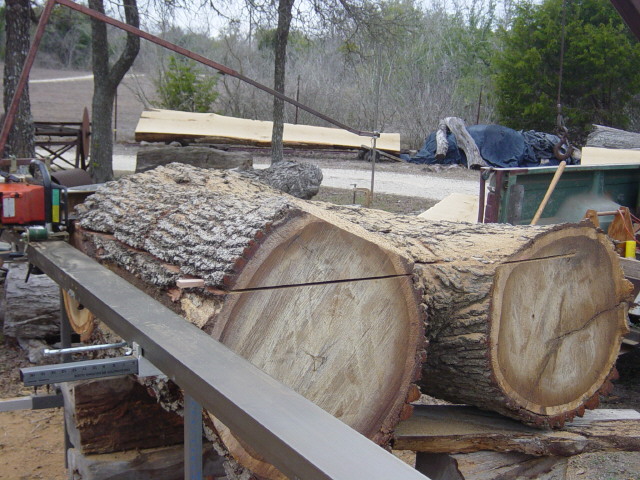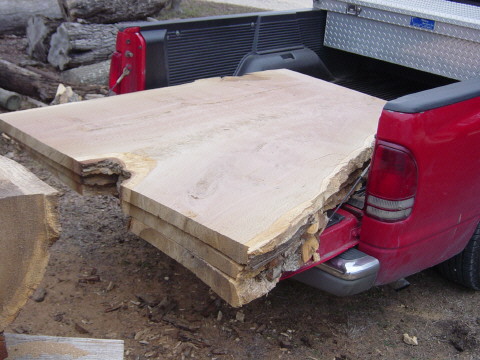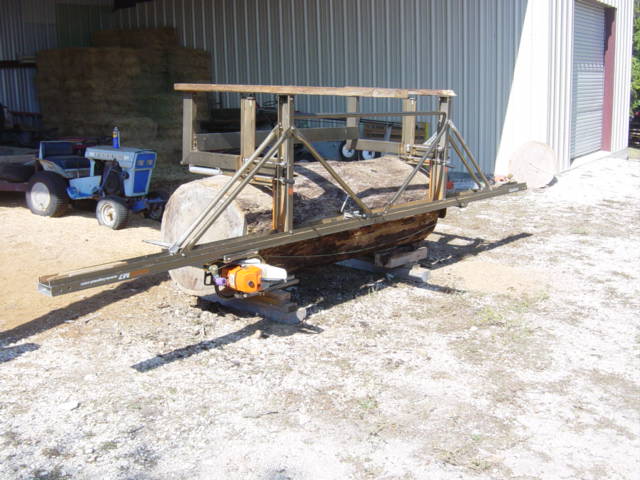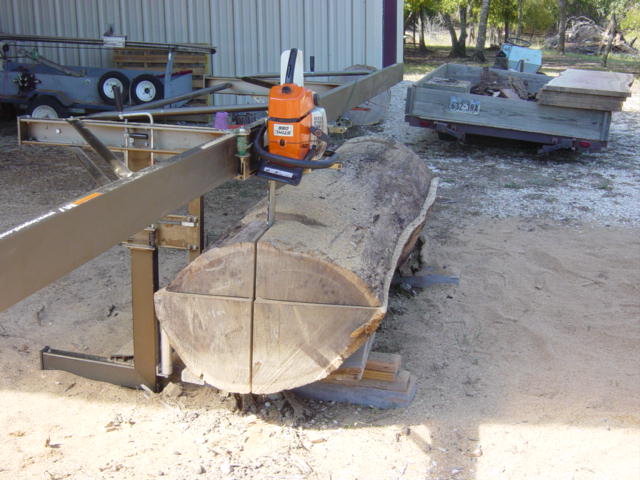Question
I recently bought a Logosol M7 and cut up a nice 28 inch red oak today. Before we all get into the bandsaw versus chainsaw mill discussion I thought I would say why I decided to go with it. I had limited money and a bandsaw mill in the price range that I needed to be in is just a ground model. The Logosol M7 is easily transported and set up. I purchased the machine to primarily put more profit in my pocket.
I have access to very reasonably priced timber-got a good friend who is logger who takes good care of me for cash. I am doing more wrought iron and wood furniture and am tired of paying a lot of money for the wood. Factoring in my time and the cost of the lumber it still puts more profit in my pocket. The machine worked very well and cut the wood to dimension. I ripped most of it into 5/4 and came out with some really nice 5/4x12 boards.
The other thing I just realized is that it takes a lot of skill to get the best boards out of a log. I am sure that I did not get the best quality boards out of the logs, but like anything I do I will get better with experience.
Forum Responses
(Sawing and Drying Forum)
From the original questioner:
I have found it quite easy to run. The powerhead (chainsaw) is mounted on a kind of sled and it is pulled with a reel-similar to a fishing reel. The hardest part is getting the logs onto the machine. If you can run a circular saw you can run one of these. The thing I like about it is it will do the job that I am looking for it to do. I am not looking to do production work, just doing specialty lumber for my work. Looking at the prices I pay for lumber, it will pay for itself and put more profit in my pocket. It seems to be quite fun to cut the lumber myself.
As for how long it is before sharpening is needed, that depends on how dirty your log is. Logosol says that you will probably dull four chains a day - so two hours cutting per chain. I think that the machine does what it is designed to do. I am primarily using it to do specialty cuts for furniture quality lumber. As for taking the fun out of stuff, keep in mind that I am an artist blacksmith by trade. My shop will hit 125 degrees in the summer when I am doing production forging. Standing in front of an 110 lb air hammer (the 110 lbs is the weight of the head) that hits 180 beats a minute for a 10 hour day when it is well over a hundred degrees gets you used to hard work. In case you wonder if the heat thing is correct I have a two burner propane forge that has an interior temperature of 2350 degrees. Itís kind of like standing two feet away from a salamander heater in the middle of the summer.


The mill will also cut upside down:

Sideways - I took four full size flitches out of the top half, then quartered the log and sawed the quarters normally for quartersawn boards.
